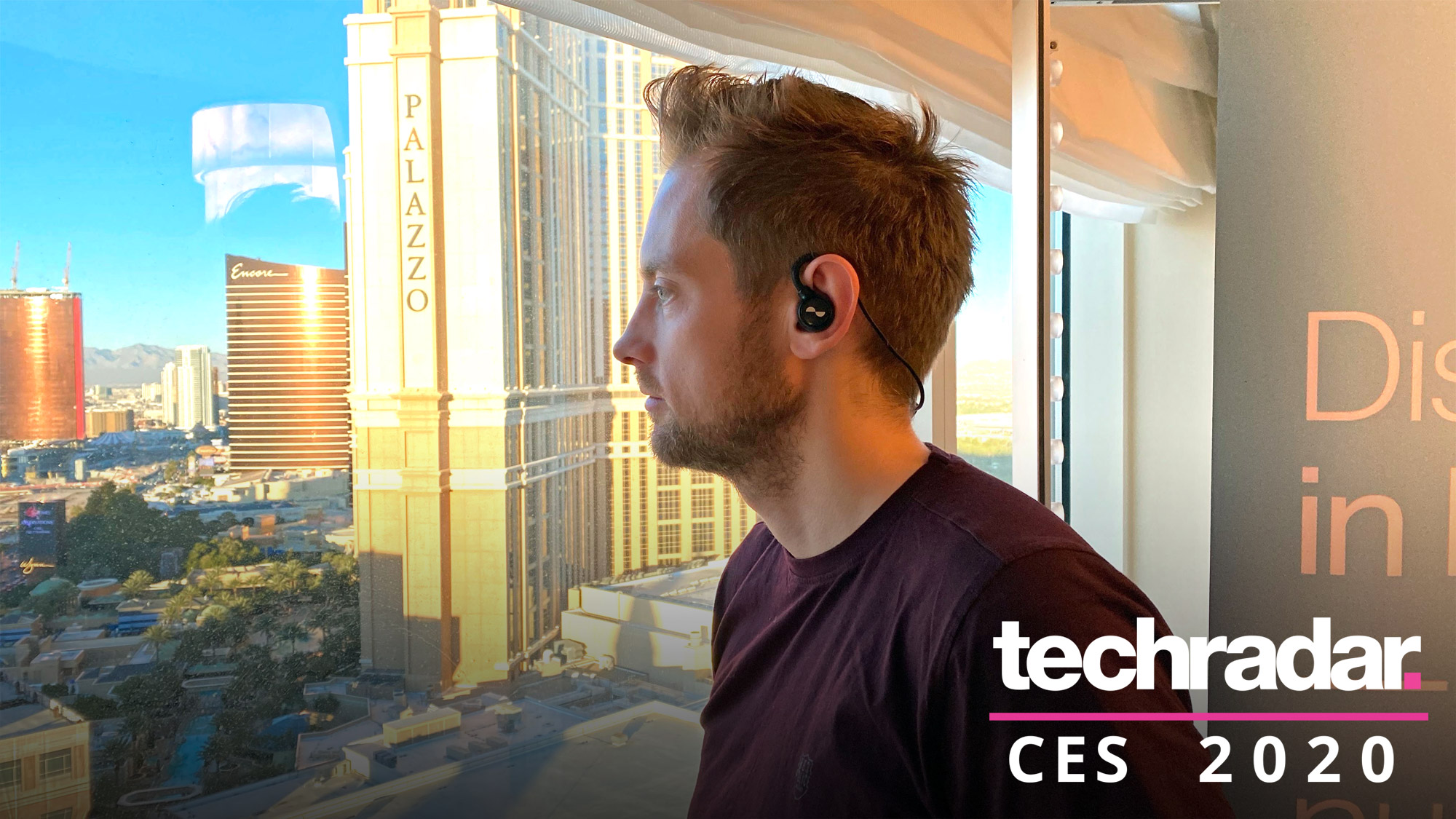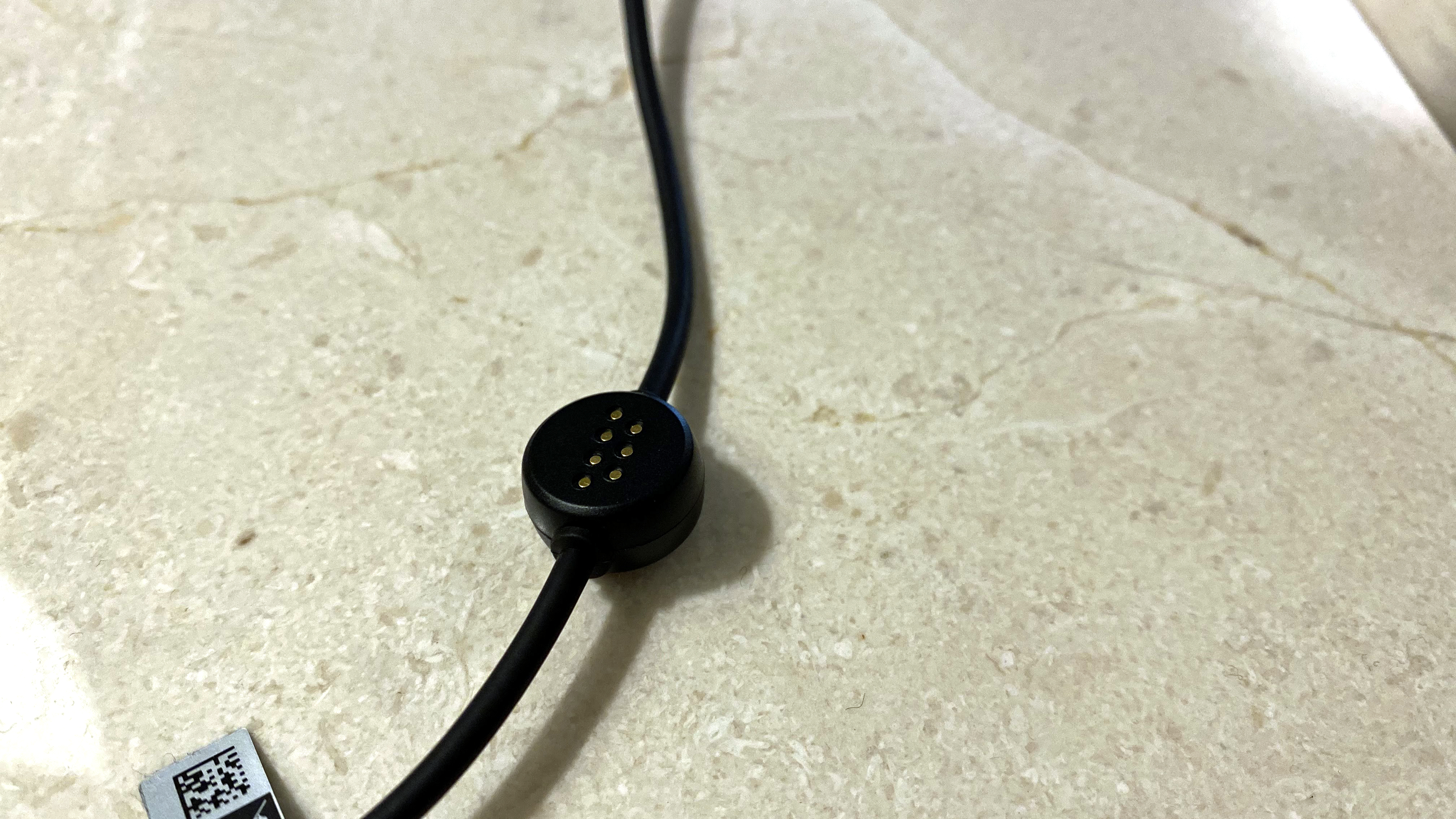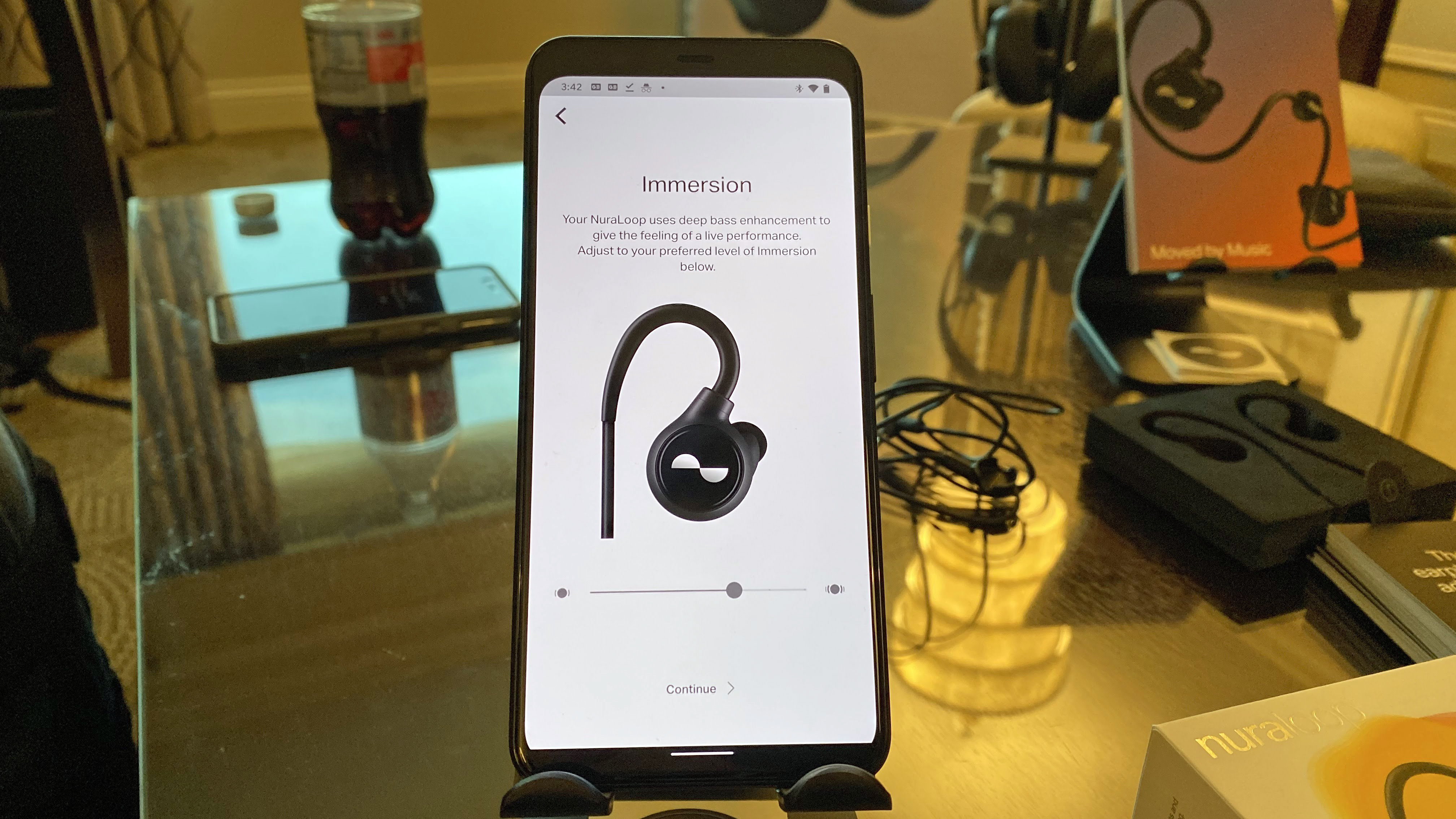Exclusive: Nuraloops could be the best headphones out - when they actually appear

There are a few reasons that being a tech journalist is brilliant – the Nuraloop headphones are the latest and greatest example of one of the main ones, and TechRadar was the first to get to try the new headphones outside of the company itself.
The moments where you get pure joy from technology doing something truly different and emotionally engaging are the reasons we do this job, constantly sifting through thousands of press releases and pacing the floor of shows like CES 2020 to find something that we – and you – will want to use.
The first iPhone had an element of that, with the multi-touch, capacitive screen making us feel ‘Oh, this is how it’s supposed to feel to interact with a smartphone’; likewise, when we first strapped on the HTC Vive and started moving around, it felt like ‘this is how virtual reality should work’.

In the case of the Nuraloops, while listening to them wasn’t as game-changing as hearing music in your ears for the first time, I’ve never felt so sure that I was getting close to the best-possible sound quality for my own ears.
Because that’s what Nura, the audio company which makes the Nuraloops, promises: a pair of around-the-neck Bluetooth headphones that pump out sound that’s tailored precisely for you. It works based on science first theorised in the 1940s: that the cochlea in your ears emits very tiny sounds based on different audio inputs.
It wasn’t until the 1970s that this theory was proven, and Nura is now claiming that it can use this feature of the human ear to offer precisely tailored sound at every frequency – in essence, creating a perfectly-tailored audio experience for every listener.

Dragan Petrovic, CEO of Nura, says that the challenge of perceiving this sound is so huge that it’s only recently that the technology has enabled it.
Sign up for breaking news, reviews, opinion, top tech deals, and more.
“We often liken measuring that signal to being at the bottom of the mountain, looking at the top and trying to determine if someone has placed a pebble on the top – the signal [we’re trying to hear] is the equivalent of the size of a pebble relative to the mountain.”
You might think that this has been done before, but Nura is confident that it’s got patents to offer sound quality like no other brand around, and can harness the response of your inner ear to bring truly customized sound profiles for each listener.

This isn’t the first time Nura has incorporated this tech into headphones – the Nuraphones are over-the-ear headphones from the same company based on the same customized audio output. In our review we praised, the same kind of sound quality that comes from the personalization – but those larger models cost $399 / £349 / AU$549), which is a heck of a lot of money in the headphones space.
To bring the technology to a smaller space, for half the price, is impressive – although it does make you wonder where compromises might have to be made.
How much will they cost… if you can get them?
The Nuraloop headphones are currently early-bird priced at $199 / £199 / AU$299 (although that will likely change when they finally come to market), and when it comes to the release date… well, that’s a slight issue. They were supposed to ship in September 2019, but that got pushed back to December.
That date has since been pushed back again, to March of this year – but Petrovic says the issues that plagued the early design stages have now been solved.
“What ended up [causing the delay], wasn’t the high tech measurement of hearing or anything like that… it was the fricking cable,” he says.
"What ended up [causing the delay], wasn’t the high tech measurement of hearing or anything like that… it was the fricking cable,”
Dragan Petrovic, Nura CEO
He explained that the amount of data flowing between each bud meant they couldn’t be hand-soldered for fear of product failure, and finding an automated solution was causing the issue.
Petrovic said the company even experimented with flexible circuit boards, but they weren’t proven to be robust enough to handle multiple bends (which these around-the-head Bluetooth headphones would create).
However, he told TechRadar that the early 2020 release date of around January / February was “well within sight”, and the fact that Nura was demoing the Nuraloops at CES was proof that things are finally ready to go. (Of course, demoing a product at a show doesn’t mean it’s ready to ship, or even that it’ll ever see the light of day.
How do they sound?

Taking the Nuraloops out of the box, and they feel pretty similar to many other headphones. Actually, it was initially rather disappointing, as they felt rather heavy and cumbersome in the hand, rather than light and set to disappear into our ears.
That perceived weakness would quickly turn into a strength.
I removed the headphones from the box and placed them around my neck and onto my ears – this action automatically activated them. I fired up the app and was asked to set up a sound profile, which I duly did.
The headphones were already making a faint pinging sound at this stage to check the fit – I found the right earbud wasn’t sitting snugly, and the app picked that up (in a similar way to how Apple’s AirPod Pro set-up works) asking me to rotate the bud forward to find the right fit.

I still wasn’t feeling like these headphones sat comfortably in the ears, but still – I was massively hopeful for what was coming.
From there, it was just a case of sitting quietly – very quietly – and waiting while a series of beeps and boops looped away in my ears. These sounds were testing different frequencies and analysing the responses, and my ‘hearing circle’ began to form.
The shape of this circle was created based on my ears’ reactions to the sounds being played, and it quickly took on a distinctive shape. When I was finished, I could listen to music either in ‘normal’ mode, or with the unique sound profile added – and the difference was pretty stark.

I was then given the chance to try others’ sound profiles through the Nuraloop headphones, and that’s where the technology really shone. The best way I can describe it is like coming up for air – all the audio parts of my ear started to come alive and I could hear far more sound than usual.
Each bud on the Nuraloop headphones is touch-sensitive, allowing you to tap to pause music, activate the sound passthrough (so you can hear the outside world better) or use the touch-sensitive dial to change volume or alter the amount of sound coming into the headphones from outside.
The latter didn’t feel particularly useful and wasn’t always perfect under the touch – we found ourselves just tapping the passthrough on and off when someone was talking to us.

This was necessary though, because the noise cancellation was truly excellent. Traditional active noise cancellation is usually just good at blocking out background noise, but it’s then impossible to hear any words being spoken to you when it’s turned on.
Back to the sound profile though, and one thing that’s always bothered me is the thought that ‘tailored sound’ might not actually be tailored at all – that it’s just loosely based on your ability to hear bass better, and turning on the right EQ setting (or even just raising the volume of the music slightly) makes you feel that you’re hearing ‘better’ sound.

With the Nuraloops, however, it’s hard to argue that things aren’t tailored to your own hearing. Trying out the sound profiles of other users yielded a noticeably different sound in the ears – either it was too tinny, or the vocals were too muddied to hear the sound properly, and switching back to our sound profile was far better.
Listening to a range of music showed that the Nuraloop headphones could handle everything with aplomb – and the key feeling it left us with was that we wanted to take them out into the real world to see how well they worked.
You can set the level of bass you enjoy at the start of the sound profile set-up process, but that doesn’t seem to interfere with the high end – EDM sounded crisp and clear without being overly tinny, and that was with a stronger focus on bass to see how the Nuraloops managed.

The active noise cancellation is also a tremendous feature, but only when the headphones are snug – I found that the right-hand bud slipped a little, but some manipulation of the malleable wire around the ear held them in place far better and kept the seal tight.
However, trying to wear the Nuraloops day-to-day when in the real world is key – would we use the sound passthrough on a more subtle level, or only use it fully open to hear a conversation? It’s a top feature on the AirPods Pro, and we’re keen to try it here.
Nura is even pushing these headphones as great for active sport, so when going running they should stay snugly in the ears. We’re not really sold on that – their weight suggests they might be more mobile, and the earbuds are rather flat, but there’s a lot of confidence from the brand that you should be able to bounce around without losing connection to your audio.

There’s also another feature that should please a lot of Bluetooth headphone users: an analogue cable that clips magnetically to the rear of the headset, allowing you to plug into a DAC (for musicians) or the entertainment system on a plane (if you’re everyone else, and have felt the frustration of not being able to use your own headphones when on a long-haul flight).
In short, our time with the Nuraloop headphones left us enthused. The price reduction from the Nuraphones doesn’t seem, in our early testing, to have diminished the sound quality too greatly, despite the miniaturization of so many components.
The delays in bringing them to market are worrying though, and it’s up to Petrovic and Nura to prove that these headphones are more than vaporware – with the promise of so much, but the reality being constant delays in order to ‘get them right’.
However, if they do appear early this year, as promised, then the Nuraloops could be some of the best headphones out there – a set of Bluetooth wireless earbuds that can handle anything most users can throw at them, and with sound that’s tailored truly to you.
- Check out all of TechRadar's CES 2020 coverage. We're live in Las Vegas to bring you all the breaking tech news and launches, plus hands-on reviews of everything from 8K TVs and foldable displays to new phones, laptops and smart home gadgets.

Gareth has been part of the consumer technology world in a career spanning three decades. He started life as a staff writer on the fledgling TechRadar, and has grew with the site (primarily as phones, tablets and wearables editor) until becoming Global Editor in Chief in 2018. Gareth has written over 4,000 articles for TechRadar, has contributed expert insight to a number of other publications, chaired panels on zeitgeist technologies, presented at the Gadget Show Live as well as representing the brand on TV and radio for multiple channels including Sky, BBC, ITV and Al-Jazeera. Passionate about fitness, he can bore anyone rigid about stress management, sleep tracking, heart rate variance as well as bemoaning something about the latest iPhone, Galaxy or OLED TV.